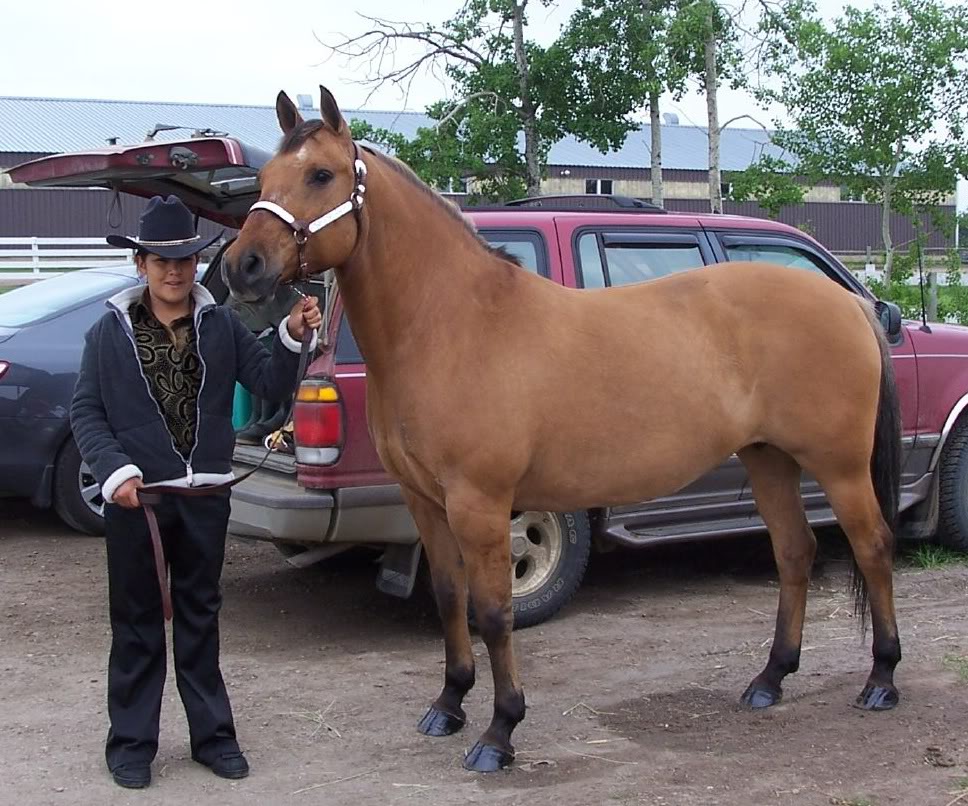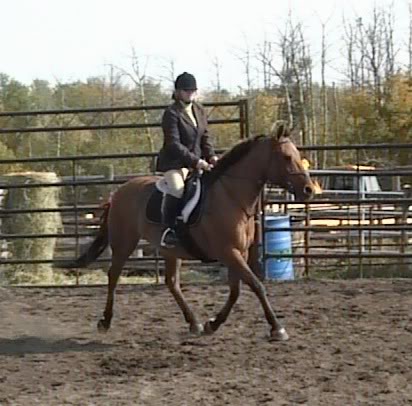- Mare wrote:
- Merikle, have you thought about writing a book called " Color for Dummies"
 And a plain Dun is what?
And a plain Dun is what?
You know honestly, its always gonna be easy for some, and hard for others. Just like everything else

. I am horrible at math, pretty much any form beyond the basics, always have been and pretty sure I always will be. Thats all you gotta think of it as

I would love to write out a book like that... maybe some day

I think the biggest problem for people is when we get into shades, and being able to identify what that shades are. A sorrel is often something different in someone's mind than what a chestnut is. However, they are still red, just different shades

Thats why I almost always refer to them as "red" when giving some insight on color genetics, so people dont have to have any more words to be confuzzled by

Duns are pretty simple. It is a modifier that like creme lightens the color coat. Only real difference when it comes to the lightening effect of the dun modifier is that dun does make quite a color change most of the time on black based horses without agouti. It also does not double up in lightening when a horse is homozygous for it like it does in horses homozygous for creme. It may create a slightly different shade, but we aren't that far into the dun gene and its quirks yet

So -
Black Horse + Dun = Grullo
Red Horse + Dun = Red Dun
Black Horse + Agouti (Bay horse) + Dun = Dun or "bay dun".
People find a lot of confusion when you get into the dun/bay dun stuff. Often they lack the supporting information to be able to figure out that Horse number 1 is actually just a dun, because it has very little black on its legs.
The shades in bays are often listed with their own agouti genetic codes, however I cannot remember them off the top of my head (wasn't that important when I learnt it I guess!

)
Here is an excerpt from
http:
://www.ultimatehorsesite.com/colors/bay.html To save me some typing
 Standard Bay: Red body with black points; body does not have any black or smutty coloration.Blood Bay: Dark blood-red color, sometimes almost purple.Mahogany bay: Brown red, with some black mixed into coat. Copper bay: Orange-red body. Golden bay: Yellowish body.
Standard Bay: Red body with black points; body does not have any black or smutty coloration.Blood Bay: Dark blood-red color, sometimes almost purple.Mahogany bay: Brown red, with some black mixed into coat. Copper bay: Orange-red body. Golden bay: Yellowish body.
A Wild bay; Note the black on the legs is restricted and is only visible around the coronet and on the fetlocks. |
Wild Bay: a bay with minimal black points; usually black on legs only comes up to fetlocks. Sometimes called a "faded" bay. Seal brown horses are actually caused by the Agouti gene, too, but are considered a different color than bay, because the gene is a different allele than that which causes regular bay (although some breed registries lump seal brown in with bay). My dun mare taffy is a variation of a wild bay, with a dun modifier. Her black even reaches higher than most wild bays does.
I will see if I can dig up some more info on the different genetic codes for all the different bays

Taffy, notice how the black leg markings are not so normal (She threw the dunskin filly I posted earlier... she has the same leg markings)


